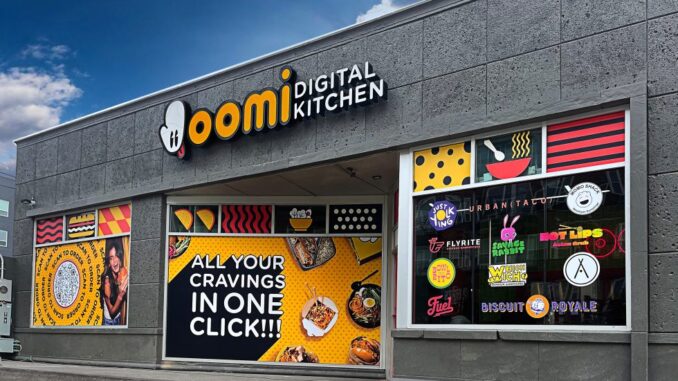
By Meredith Sandland, CEO and Co-Founder of Empower Delivery - 9.14.2024
Artificial Intelligence (AI) can feel like a big leap for many in the restaurant industry. For some, it’s a source of excitement; for others, it seems like a futuristic challenge. But the truth is, AI is already here, quietly transforming how restaurants operate, making things smoother for staff and more personalized for guests.
AI isn’t about robots taking over jobs in the kitchen. It’s about using smart technology to capture and analyze data, streamline operations, and create a better experience for guests. Let’s dive into a few key ways AI is doing that today.
Smarter, More Personalized Ordering
One of the biggest ways AI is enhancing the guest experience is through personalized ordering. By analyzing past orders and preferences, AI can suggest menu items that guests are likely to enjoy. This not only speeds up the ordering process but also helps guests feel like the restaurant “knows” them.
Even better, AI systems can identify guests no matter how they order—whether they’re dining in, picking up, or getting delivery. This means restaurants can track preferences across all channels, leading to smarter decisions about menu updates, promotions, and new item launches.
Streamlined Kitchen Operations
AI is also making kitchens run more efficiently by predicting busy times and managing resources accordingly. Instead of scrambling during a rush or overpreparing during slow periods, AI forecasts demand and helps kitchens get ahead of the curve.
AI-driven systems can also manage orders in real-time, adjusting quote times based on how busy the kitchen is, how many orders are in the queue, and even how long delivery drivers will take to arrive. This means guests get accurate, real-time updates on when their food will be ready or delivered—making for a smoother, more reliable, and more delightful experience.
Optimized Delivery for Faster, Fresher Food
Delivery can be a headache for both restaurants and guests, but AI is stepping in to solve many of the common issues. With AI-driven delivery tools, restaurants can dynamically adjust the number of drivers based on real-time demand, find the best delivery routes, and even batch orders more efficiently, so it doesn’t negatively affect food quality or delivery speed.
This means fewer delays, fresher food, and happier customers. For restaurants, it means lower delivery costs, fewer errors, and more control over the guest experience—turning delivery into a win-win for everyone.
Using AI to Improve the Guest Experience Starts with Unified Data
Many restaurants are already capturing data, but the reality is they’re probably not capturing it everywhere—and even if they are, they may not be able to do much with it. That’s because many restaurants are operating with disconnected “tech stacks”—a mix of systems that don’t communicate with each other. While this setup can lead to small improvements here and there, it falls short of delivering the full potential of AI to enhance the entire guest experience.
Without a unified platform, restaurants can’t achieve 100% known customers or use their data to run the entire operation efficiently. Instead of relying on fragmented systems, restaurants need a single platform that tracks everything—from ordering to kitchen operations, all the way through to delivery. This holistic approach is what unlocks the real power of AI. When data flows seamlessly through the entire guest journey, it leads to personalized experiences, more efficient operations, and ultimately, better outcomes for both the restaurant and its guests.
Oomi Digital Kitchen is a prime example of how a unified approach can revolutionize restaurant operations. Using one holistic system to run their restaurant, Oomi has digitized every aspect of its business, from order management through to remarketing. This has allowed them to know their guests 100%, no matter how the order is placed. As a result, they’ve achieved impressive growth within just one year. By leveraging AI to analyze guest preferences and optimize operations, Oomi expanded to eight different brands, maintained a high customer rating, and now operates with the efficiency and data-driven insights of a tech company—all with one small kitchen staff.
Their success shows how AI, combined with the right data setup, can lead to both growth and operational efficiency.
Is AI the Future of the Restaurant Industry?
AI is already shaping how restaurants operate, but it’s not just about automation for the sake of it. The real value of AI lies in creating better outcomes—for both restaurants and their guests. To unlock this potential, restaurants need complete, high-quality data that’s fully available and integrated across their operations.
This can’t happen with siloed systems that don’t talk to each other. Instead, restaurants need a holistic platform (such as Empower Delivery) that captures data across the entire guest journey—from ordering to kitchen operations to delivery. By centralizing this data, AI can do what it does best: streamline operations, personalize guest experiences, and ultimately improve satisfaction.
AI isn’t just the future—it’s the present. And those who use it wisely, with a focus on guest outcomes, will be the ones leading the industry forward.
 Restaurant veteran and digital foodservice expert Meredith Sandland is the CEO and Co-Founder of Empower Delivery. The Empower Delivery software allows restaurants to offer superior delivery without compromising on food quality, profitability, or the customer experience. Previously, she served as founding COO at Kitchen United. As Chief Development Officer at Taco Bell (Yum! Brands), she quadrupled Taco Bell net new unit growth, relaunched the concept to accommodate modern demands including digital interaction, added over 1,000 units to the brand, and over $1 billion in system sales.
Restaurant veteran and digital foodservice expert Meredith Sandland is the CEO and Co-Founder of Empower Delivery. The Empower Delivery software allows restaurants to offer superior delivery without compromising on food quality, profitability, or the customer experience. Previously, she served as founding COO at Kitchen United. As Chief Development Officer at Taco Bell (Yum! Brands), she quadrupled Taco Bell net new unit growth, relaunched the concept to accommodate modern demands including digital interaction, added over 1,000 units to the brand, and over $1 billion in system sales.
Are you an industry thought leader with a point of view on restaurant technology that you would like to share with our readers? If so, we invite you to review our editorial guidelines and submit your article for publishing consideration.

